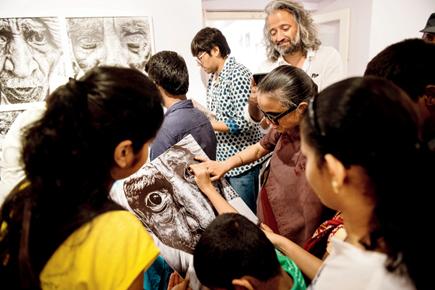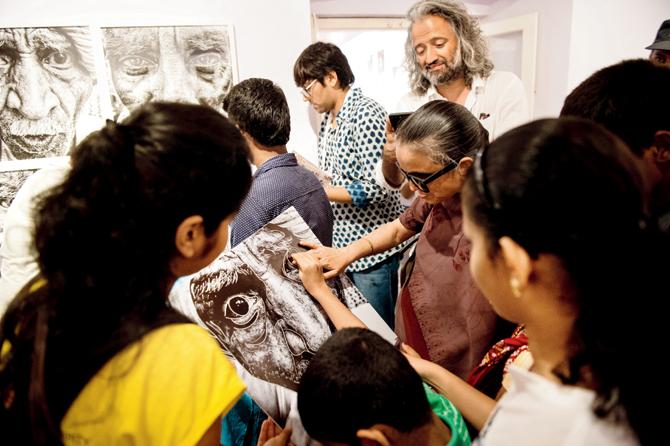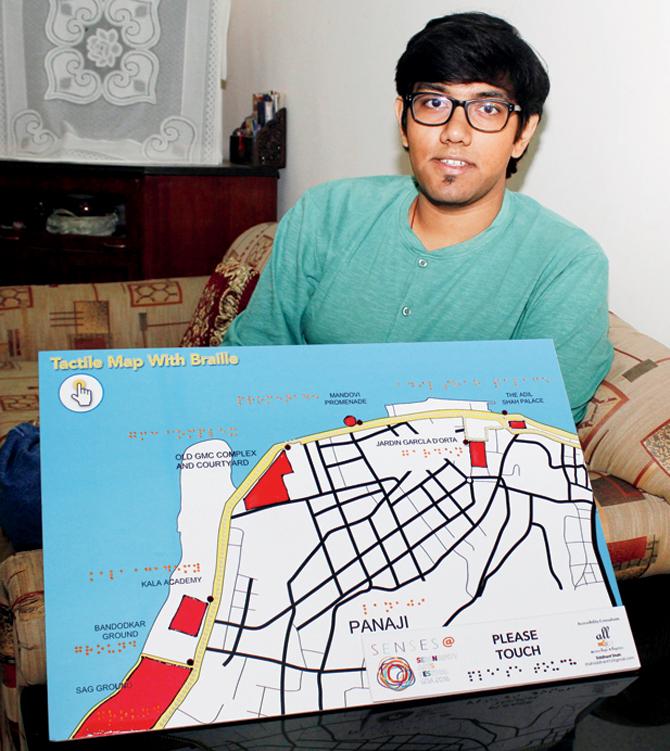Culture and art access consultant on making his visually challenged visitors "see" photographs


Students from National Association for the Blind, Goa, experience tactile photographs at the Serendipity Arts Festival
At the ongoing Serendipity Arts Festival in Goa, Siddhant Anisha Shah was kept busy by visitors "looking" at a photography exhibition. Young from the National Association for the Blind, Goa, huddled around four monochrome portraits by Chandan Khanna; Shah, a 26-year-old culture and art access consultant, had made tactile reproductions of these photographs, allowing his young audience to know more about these works through touch.
ADVERTISEMENT
Part of his larger aim to make the visual arts accessible for the disabled, Shah's 'Senses at Serendipity' was his way of getting the visually challenged students to appreciate portraiture. The tactile photograph brings out the nuances and definitions in Khanna's photographs. "We started by getting them to familiarise their own faces; later, when they touched the faces in the tactile works, they were able to understand better as they already had a mental image of their faces," says Shah. For the last year and a half, Shah has been working with institutions across the country in an attempt to make art institutions accessible. Earlier this year, Shah worked with the City Palace, Jaipur, to make tactile forms of their miniatures and also with the National Museum, New Delhi. "Making tactile versions of miniatures is simpler than for photographs as they have well-defined lines. With photography, there is so much play of light and shadow, that is hard to convey all the nuances to the visually challenged," says Shah.

Siddhant Shah. Pic/Poonam Bathija
However, his audiences are quick to learn. In one portrait, for instance, the eyes were shadowed. "The student who touched the work asked why this portrait did not have eyeballs and the rest did. We then explained to him why that was the case," says Shah.
Shah started work with tactile art soon after he won a scholarship for heritage management at the University of Kent's Greece outpost. "People accessed museums regularly over in Greece and they were allowed to touch most exhibits. It got me thinking on accessibility for museums here. Not just helping people reach museums but also "intellectual accessibility" – how can they understand the work better?" he says. Shah was further motivated soon after his mother lost partial sight.
The manner in which the visually challenged approach the visual arts, Shah cautions, is primarily different from the way in which the sighted do. The idea with tactile art, he says, is not to "recreate" the experience of seeing a work of art but to be able to reproduce the experience - through smell and sound if required, if not through sight. "It is different from the visual experience, which is so much about colour, depth and perspective. These rules can't be applied in tactile art," he says. While Shah's greatest challenge comes in the form on openness on the part of institutions, he says that funnier moments pop up when visitors come and tell him, "You have put the wrong sign" on looking at the "please touch" signs. "It is still novel for them, that they can touch a work of art."
 Subscribe today by clicking the link and stay updated with the latest news!" Click here!
Subscribe today by clicking the link and stay updated with the latest news!" Click here!







